Menu
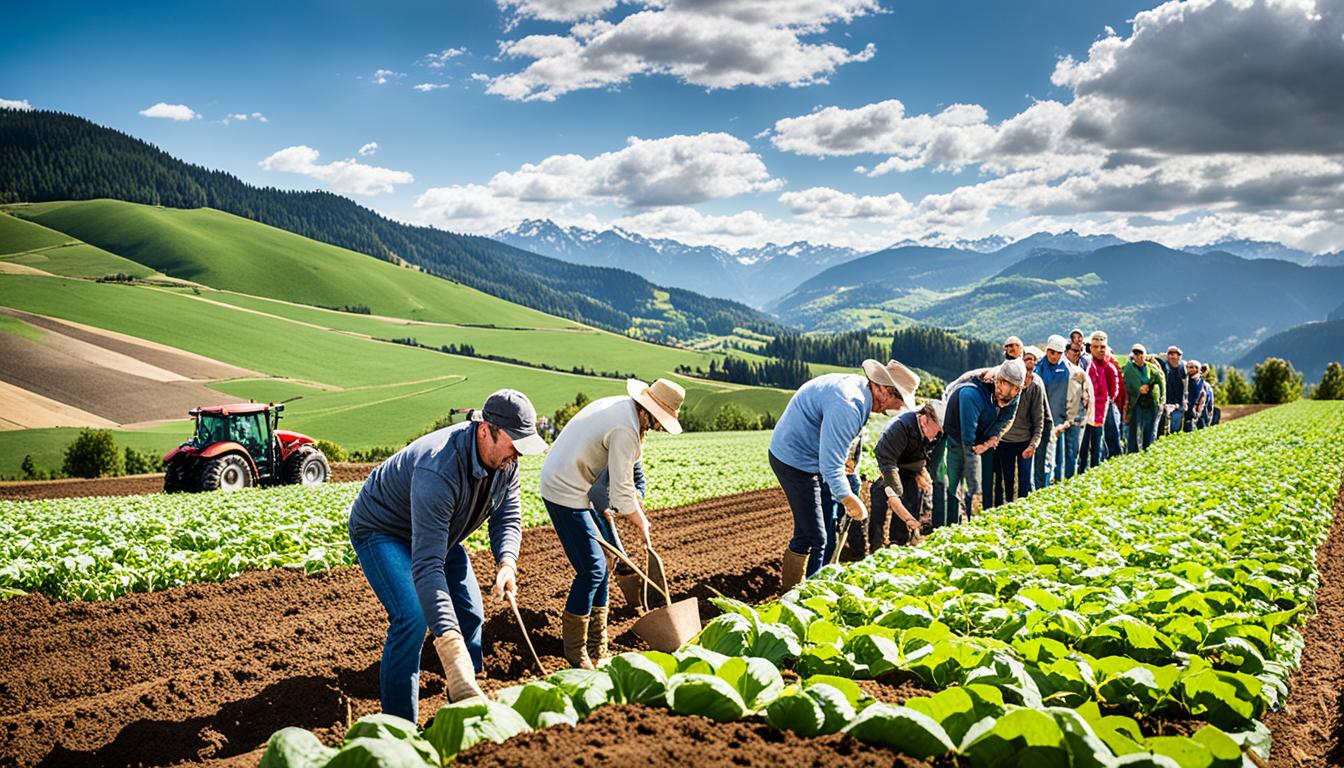
Did you know that more than one billion people work in agriculture around the world? This sector is vital, especially for small and medium-sized businesses in growing countries. Cross-border farming partnerships now bring great advantages to farmers. They help improve finances, encourage new technology and financial services for farms, and deal with how to produce more.
In a really interesting way, small farmers who own a lot of land are vital in this big global trend. Most of these small farms are in countries where incomes are not very high. By working with other countries on agriculture, these farmers have new chances to be strong and recover, especially after things like the COVID-19 outbreak.
These international farming teams are a key to surpassing difficulties and finding new, smart ways to do farming. Joining these teams offers farmers chances to reach more customers, find new ways to earn money, and make a bigger impact on the economy.
Collaborations across country borders in farming are essential for growth and joining economies. These partnerships, named cross-national agricultural alliances, allow sharing of resources and innovative ideas. They are key in tackling big issues like feeding the world and making sure goods move smoothly around.
The definition of cross-border collaborations means working together across nations for economic farming success. These alliances help in joining economies and trading agricultural products, skills, and methods. They are important today because they help small farmers reach big markets and use advanced farming methods to grow and last.
Cross-border work started from simple trading and sharing culture to aimed efforts. In the past, ancient cultures traded to make sure they had enough food and to have a stable economy. Over time, these early pacts grew into solid deals to better connect economies and face global issues. For example, the Kenethao District helped a lot in farming and using land better from 2003-2005 by working together. This also improved the education level and income of farmers.
Lately, cross-national agricultural alliances have focused more on contract farming. Farmers in many places have found this type of farming very helpful. They get better info and advice through these strong partnerships. They also benefit a lot from being part of a production group.
Their story across time shows how vital cross-border work is in farming today. It helps in linking economies and moving goods freely. These connections still remain critical in keeping the world fed.
Joining forces across countries helps in agricultural growth. It’s especially good for small farmers in poorer nations. They get to sell to new places, find more ways to make money, and improve how they grow things.
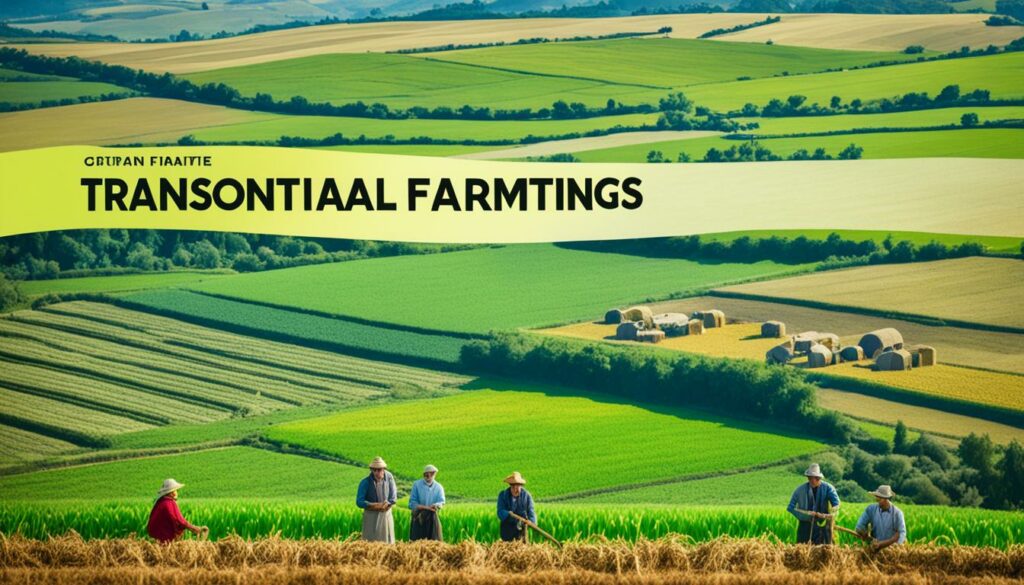
Working with others in different countries opens up new markets for farmers. They can sell beyond their usual areas, finding bigger and better markets. This lets them earn more and keep their prices competitive.
Take small farmers, for example. They often own very little land yet produce the most food in some places. By teaming up with others internationally, they can sell their goods wider. This makes their income more reliable and less tied to just one place.
Going global in farming helps to lower the risk. If one market slows down, they might still be okay in others. This is key when markets often change, risking local food supplies.
Numbers show many face food shortages, making strong farming crucial. Working with partners worldwide can help soften these blows. It makes the food supply chain steadier for everyone.
| Economic Advantages | Impact |
|---|---|
| Increased Market Access | Broadened revenue opportunities and competitive pricing |
| Risk Diversification | Mitigates market dependency and stabilises incomes |
In conclusion, farming together globally boosts not just sales but safety nets. With better access to markets and smarter ways to face risks, agriculture grows more solid. It means better chances for farmers everywhere.
Today, working across borders is crucial for agricultural tech growth and major breakthroughs in farming. Such collaborations help share the latest data and methods worldwide. They speed up improvements in agriculture on a global scale.
Working together globally gives access to cutting-edge farming methods. For example, using drones in precision farming saves resources. It cuts down on water use and makes better use of land by growing crops vertically.
The use of IoT in smart farming also improves water usage. It means farmers can grow more while using less water. These advances are shared worldwide, helping farmers increase productivity and care for the environment.
Sharing new ideas and research is key to improving agriculture. Moving data across borders plays a big role in this journey of innovation. Areas like biotech and new ways to make things see great results thanks to global teamwork.
Places in North America, such as Silicon Valley and New York, are great at supporting these efforts. They attract bright minds and funding from all over the world. This support helps turn ideas into action and protects these new discoveries.
Notonly that, but countries working together can use policies to boost tech sharing and global digital connections. Teamwork across borders tackles big issues like climate change, health, and making sure everyone has enough to eat. So, working together on agriculture tech gives a big economic boost and makes this industry more competitive internationally.
| Contribution | Details |
|---|---|
| Precise Agriculture | Optimises resource use through drones. |
| Vertical Farming | Reduces water consumption and maximises land use. |
| Smart Irrigation | Enhances water management with IoT sensors. |
| Research and Development | Facilitates joint research and innovation exchange. |
| International Policies | Increases technology access and digital connectivity for enhanced innovation. |
In my opinion, real change in farming tech comes from working closely with others around the world. When we join forces globally, we can make a real difference in agriculture. This leads to more new ideas and better ways of farming.

International agricultural partnerships are key in battling climate change challenges. They allow sharing of top sustainable farming methods. Nations work together to battle climate change in farming, making our food supply safer.
International partnerships share effective farming strategies. The United States Department of Agriculture’s Foreign Agricultural Service (FAS) aims for sustainable commodities in 2023-2027. This supports adaptation to climate change in farming.
Poorer countries face bigger threats from climate change in farming. They need help to learn sustainable ways. More food aid and teaching improve their farming and ability to handle climate changes. This boosts their economy too.
Working together on farms helps research on surviving climate change. The changing climate may lower farm output globally. We need new ways to cope, focusing on local needs.
For instance, the Foreign Agricultural Service is improving its data gathering. Using satellites and more reports will help plan better for climate challenges.
International and national groups play a huge role in farming and trade. They must join forces to fight climate change’s impact on food security. They need enough people to manage trade well.
“Global collaboration allows the pooling of knowledge, expertise, and innovative research from various regions and disciplines in agriculture.”
Spending on sustainable farming and updates is vital against climate change. Together, we can boost farming’s ability to resist climate change. This includes new crops and policies to keep farming sustainable.
Looking at successful farming projects between countries shows us a lot. We see how working together can help not just farmers but also bring new ideas and investments to farming all over the world.
In 2021, the Agritech Challenge was key in global farming. It aimed to help small farmers hit by COVID-19 by introducing new technology. This let farmers use advanced methods and tools to stay strong in the pandemic.
This event was huge. It brought farmers and tech thinkers from around the world together. They worked as a team to face difficulties caused by the pandemic.
China’s Belt and Road project in farming has been a game-changer. By 2020, Chinese farm businesses were active in 83 countries worldwide. This work greatly increased farm output and cut rural poverty.
The focus was on farming, animal care, and fishing the most.
In Myanmar and Laos, special funds and loans helped a lot. They reduced the growing of illegal drugs by supporting legal farming more.
“More than 40% of jobs in farming in BRI countries come from Chinese investments. This shows a big change in local farm economies,” — Asian Development Bank report.
| Country | No. of Companies | Main Agricultural Activity |
|---|---|---|
| Myanmar | 101 | Farming, Animal Husbandry |
| Laos | 91 | Farming, Fishery |
According to the Asian Development Bank, China’s project is a major part of farming in these places. It helps solve food problems in rural areas and makes farming jobs secure. These stories of working together in farming show us how important it is. They tell us we need to keep joining forces across countries to grow and make farming more sustainable.
Working together internationally in farming makes a big difference in financial success. It allows people to share money and knowledge, making the best use of resources in farming. This way of working brings in a lot of money and makes sure we use our resources well for the best results.

A recent study shows more electricity trade between Central Asian countries can bring about $6.4 billion of economic benefits from 2020 to 2030. Also, seven projects in Central Asia have received $3.5 billion in commitments. These examples show the huge financial benefits of working together across borders.
But without proper collaboration, the yearly cost of not using water and energy resources together is more than $4.5 billion. This points out the importance of working together in farming effectively. Initiatives like the Climate Adaptation and Mitigation Program for the Aral Sea Basin (CAMP4ASB) have had great results. Since 2014, nearly 135,000 people have benefited from it. It has also created over 27,500 jobs, with 27% going to women.
Also, the CAWEP programme has led to 23 investments in water, energy, and the environment, totalling about $3.78 billion since 2009. This shows the profits from working together in farming internationally. For example, road works in the Kyrgyz Republic have helped 1.2 million people since 2010. It proves how important it is to use resources well in farming.
The Kazakhstan – East West Roads Project cut cargo travel times from Western Europe to Western China from 45 days to 8-10 days. It is a good example of improving how we use resources in farming. By making the infrastructure better, these projects help grow the economy.
International farming partnerships aim to both reach more markets and spend money in the best way. By combining money and knowledge from around the world, we can make a big difference in how much money we make. This would create a stronger farming sector for everyone.
Farmers can grow their market by working with others across borders. This helps in creating new ideas in farming and keeping the economy strong. It lets them sell to many places, not just locally. This move helps them make more money and grow, which is what many top CEOs are aiming for.
Look at companies like Toyota and Hyundai, making it big by selling abroad. Farmers can do the same and get huge benefits. Even businesses like KFC and McDonald’s show the way by sharing their brand with others. This lets them be known worldwide.
Giving where they sell a mix of choices is a big plus when politics and business clash. Buying or teaming up with others can help them face less competition and make customers happier. Big names like Molson Coors and SABMiller have shown that together, they can get stronger. This is a way to grow and set foot in new markets.
For farmers, knowing how politics and risks affect their business is key. This helps them make smart choices and deal with any bumps, like trade fights. By spreading what they do and where they work, they make their business safer from surprises.
And, technology is there to make things easier for farmers working worldwide. Things like AI and blockchain make the job smoother and stronger. They help in doing things better, working well with others in different countries. This all makes for a powerful and wide-reaching business.
| Strategy | Example Companies | Benefits |
|---|---|---|
| Exporting Products | Toyota, Hyundai | Expands market reach, boosts revenue |
| Franchising & Licensing | KFC, McDonald’s | Enhances brand presence, generates income |
| Joint Ventures | Molson Coors, SABMiller | Reduces risk, fosters innovation |
| Acquisitions & Mergers | Microsoft, General Electric | Improves customer experience, reduces competition |
In the end, expanding markets by working with other countries is very good for farmers. It helps in growing their business and bringing new ideas. This leads to strong and growing farming businesses all around.
Working together in farming is key to making more crops and better harvests. These team-ups bring lots of ideas and tools from around the world. This means farmers can use new methods that really boost the amount of food they grow.
A study shows how important it is to deal with the effects of climate change on farms. For instance, lower crop yields because of the climate may cause many people in Mexico to move away by 2080. This makes the case for countries to work together and create farming methods that can cope with tough times.
Mexico saw more people leaving for the United States from 1995 to 2005 because of a big drought.
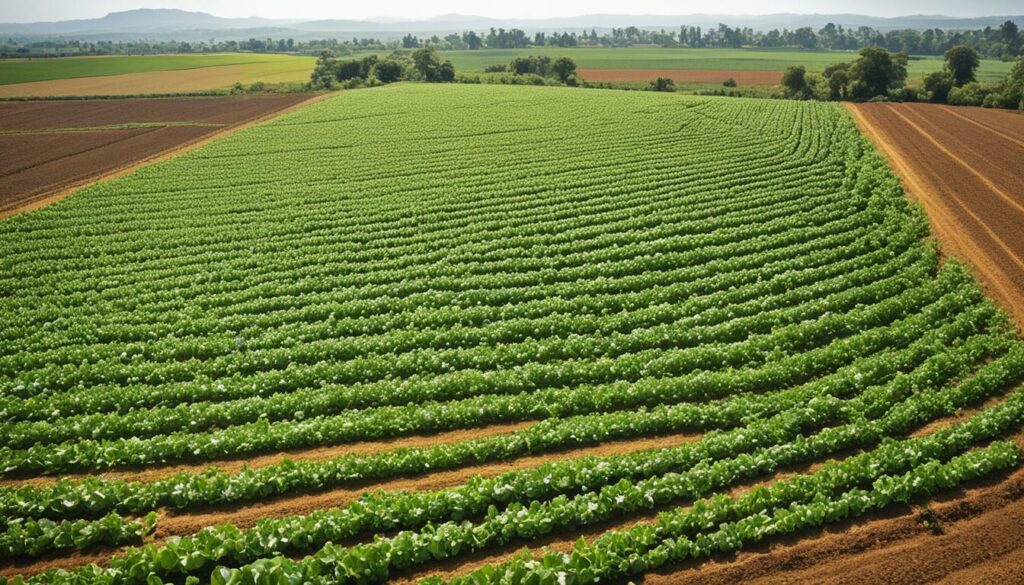
Joining forces on a global level helps farmers deal with climate changes that could harm their crops. Through projects like the Excellence in Agronomy (EiA), and help from the CGIAR Big Data Platform, we’ve seen the impact of using technology and data to grow more food. These projects have done very well in Latin America, with better farming ways that help grow more potatoes and protect the land.
Using data can help us see which farming ways are best for different kinds of weather. This can show us how much crop yields affect people moving away and what might happen in different climate situations. The Excellence in Agronomy Initiative shows the strength of working together to find new farming methods that really work.
Experts are even finding ways to tell how much climate changes affect people moving, not just other reasons. By using special methods to study this, they can give farmers tips to improve how they farm and be more ready for climate changes. This can make a big difference in how well crops grow and keep us from hunger.
| Key Factor | Impact |
|---|---|
| Climate Variability (1995-2005) | Basis for estimating sensitivity of emigration to crop yields |
| Semielasticity of Emigration with respect to Crop Yields | -0.2 (10% reduction in yields leads to 2% population emigration) |
| Projected Emigration (2080) | 1.4 to 6.7 million adult Mexicans due to declining agricultural productivity |
Getting access to new technologies and shared knowledge from team work is key for growing more crops and better food. By learning from each other, farmers globally can have stronger and more productive farms. This will help our farming stay strong and feed our world.
Joining forces across borders in agriculture can help farmers reach global markets. This opens up the chance for them to do business beyond their local area. It lets them take advantage of trade on an international level.
This move means farmers can sell more produce to people all around the world. They get a chance to make more money and keep their farms running. It’s worth noting that a lot of people work in farming industries. In fact, over half of the small and medium-sized businesses in growing countries are in agriculture.
Especially, those with small farms, less than two hectares, who make most of the food in many parts of the world, will see big benefits. Engaging in global trade can help them earn from different sources. It also reduces the risk of depending too much on local buyers.
The Agritech Challenge 2021 shows how countries like India, Indonesia, and Uganda can work together. They aim to create new ways to trade in farm goods. West Africa is also making efforts. They’re working to move extra food around the region. This helps make sure there’s enough food and fight hunger.
Working together on selling farm goods not only helps trade in the local area but also boosts the economy. It creates new jobs and makes moving products easier. But, there are tough parts like trade rules, bad roads, and meeting certain safety checks that need fixing.
To make farming trade between countries smoother, it’s important to work on some key things. These include making it easier to trade, agreeing on common rules, building better roads, and helping countries in a region work together. Doing these will make sure farmers can sell in worldwide markets well.
The need for global food security has never been greater. There are alarming numbers on the rise of extreme poverty in sub-Saharan Africa. Success here is crucial for fighting food insecurity and bolstering global supply chains. This ensures a steady supply of food across the world.
The food crisis in Africa is getting worse due to a growing population. By 2050, Africa might have two out of five of the world’s children. To combat this, countries and international groups need to work together. Some places, like Mozambique, are already seeing the benefits from working as a team. Reforestation there has made fishing better. In the Sahel, a farming technique called Zaï Pit has made the soil healthier for plants. These steps are affordable and can make a big difference in food security.
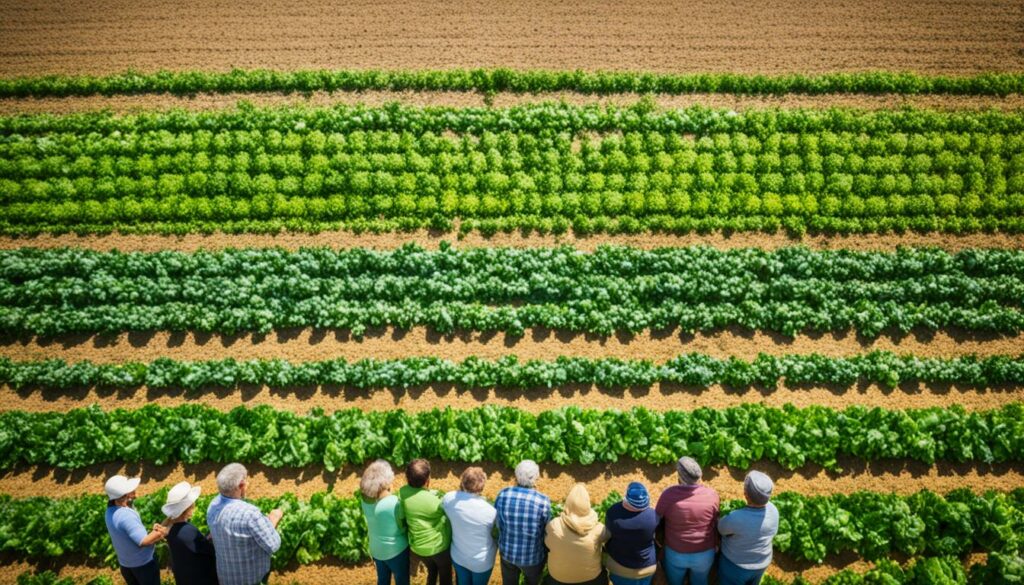
Maintaining steady supply chains is key, especially in times of crisis. By linking regional markets, cross-border projects help food flow smoothly. This approach is proven to strengthen global supply chains. In Europe, working together has solved problems with water quality and agriculture. These achievements show that when countries cooperate, food security improves.
In Africa, key declarations and initiatives have shown a commitment to growing food capability. But for progress, strong political and financial support is essential. Investing in shared goals for food safety can promote growth and resilience despite future challenges.
Rural economic development is hugely important. More than 80% of the world’s poorest people live in rural areas. This is almost three times the number in cities. Working together across borders in farming helps reduce poverty. It brings in important investments, technology, and builds better infrastructure in these places.
Let’s look at some key numbers to highlight this issue:
| Indicator | Statistics |
|---|---|
| Global Food Insecurity (2022) | 29.6% (2.4 billion people) |
| Population Living in Extreme Poverty (2022) | 670 million |
| Future Projections of Hunger (2030) | 600 million people |
| Multidimensional Poverty (2023) | 1.1 billion people |
| Agriculture Employment in Niger | 80% of the working population |
| Agriculture’s Contribution to GDP in Niger | 40% |
| Agriculture Employment in ASEAN | 32% of the population |
| Agriculture’s Contribution to GDP in ASEAN | 22% |
Burkina Faso shows how global farming partnerships boost rural areas. The Hunger Project has made 10 self-reliant hubs, now helping over 222,000 people. Among these is an area with 37,394 individuals. For more than 80% of Burkinabe, agriculture is vital, contributing hugely to the economy. With the right partnerships, significant progress is made.
In the fight against poverty, focusing on farming is key. In the whole world, almost two-thirds of the extreme poor work in farming. In Southeast Asia, farming employs a lot of people. In Niger, it’s 80% and across ASEAN, it’s 32%. These numbers show the importance of farming for economic growth and reducing poverty.
Using worldwide farming partnerships helps a lot in rural areas. This approach brings better farming methods, new financial ideas, and more market reach. All of these efforts aim to reduce poverty effectively through farming.
In cross-border work, many challenges arise, like trade barriers and different rules. It’s key to work together to deal with these issues. This involves making policies alike, making trade easier, and sharing the work to build better infrastructure.
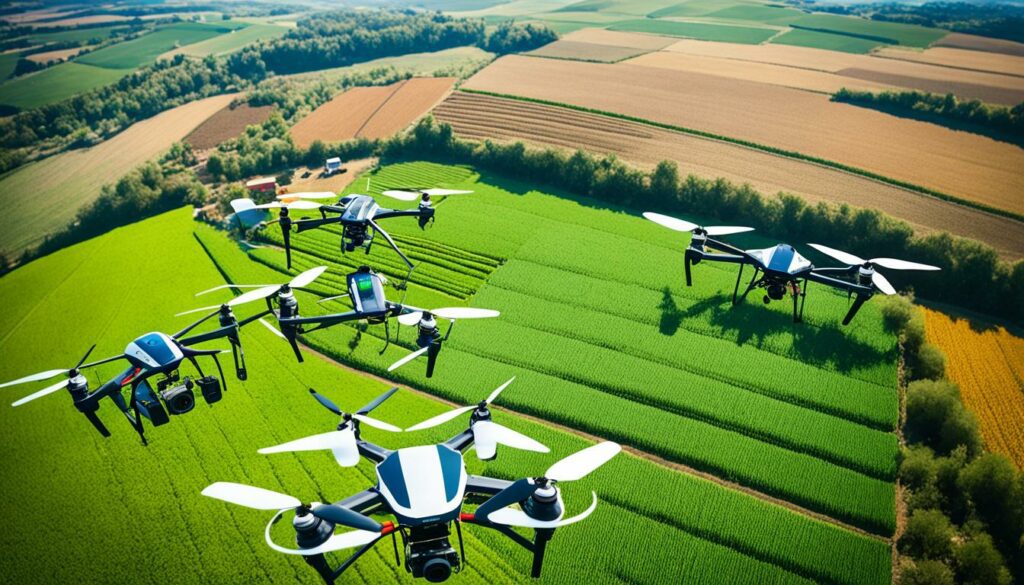
Studies show that organised plans really help. Marcis et al. (2019) offered a way to measure how eco-friendly farming groups are. This could help them do better on green goals. Ajates (2020) suggested a plan to make these groups more eco-friendly. And Gicheru (2016) said they are vital for reaching global green targets. These tips can help in working across borders.
The farm sector’s issues need everyone to work together. Bringing in the SDGs can make Spain’s wine farms work better, say Mozas-Moral et al. (2021). And small farmers joining programmes can help meet global food goals, notes Vabi Vamuloh et al. (2019). Co-op work makes for real change.
Think about what CBP does with trade. In 2014, it managed $2.4 trillion, helping trade grow 4%. It handled about 26 million ship loads. Using ACE for online filing and other tech shows the way. Mixing new tech with shared rules works well in farm projects.
In the end, solving issues in working with other nations needs plans, shared rules, and strong friends. Together, we can beat the problems of rules and moving things around. This leads to great and green farm partnerships.
Cross-border farming collaborations can change global agriculture by giving many advantages. These partnerships help grow the economy by opening new markets. They also bring new technology and knowledge.
Farmers work together to improve how they grow crops. They learn new techniques and do research together. This helps them produce more food and better quality crops.
These partnerships are also important for big issues like food security and climate change. By working together, farmers keep food supplies steady, even in tough times. They also learn how to cope with bad weather, which protects their farms.
But, making these collaborations work well faces problems. Things like trade limits, poor roads, and not meeting health standards can slow down farming trade. Governments need to step in to help – they should focus on making trade easier, building better roads, and working closer with other countries.
Overall, working together across borders in farming is full of promise. We need to focus on making a good environment for farmers to share, innovate, and grow sustainably. With these efforts, we can better support farmers around the world, leading to more prosperity and ensuring food for everyone.
Collaborating across borders brings many benefits. These include better financial health and access to the latest agricultural technology and finance solutions. Such partnerships also improve productivity and stabilize supply chains, which is vital during crises like the COVID-19 pandemic.
These collaborations join countries towards economic and innovative goals. They focus on sharing goods and knowledge. This creates many economic chances in farming.
Global agricultural partnerships tackle food security by keeping agricultural product flow steady. They make supply chains more secure. This ensures that people worldwide have a reliable food source, even in crises.
Such alliances offer major economics benefits. They open up new markets and spread risks through trade. They also improve regional agriculture and make jobs.
Technology sharing happens in many ways. It includes exchanging advanced farming methods and setting up research exchanges. This helps farmers use new technologies from around the world, pushing farming forward.
Yes, some good examples are the Agritech Challenge 2021, which helped small farmers during COVID-19. Also, China’s Belt and Road Initiative investments, boosting farming and rural areas.
Such partnerships are key in fighting climate change. They share sustainable farming ideas and work on ways to stand up to the changing climate together. This cooperation makes new climate-ready farming practices for different places.
They join financial and knowledge sources from different places. This makes farm resource use smarter, leading to more money for farmers.
These collaborations help farmers reach new markets, beyond their local ones. This expands their customer base worldwide. It promotes new agricultural ideas and makes the economy stronger.
A global pool of knowledge and resources helps farmers learn better methods and use the latest technology. This leads to better crop yields and a more productive farming sector.
Sometimes there are issues like trade blocks, lack of infrastructure, and different rules. The fix is to harmonize policies, smooth out trade, and work together to build better infrastructure.